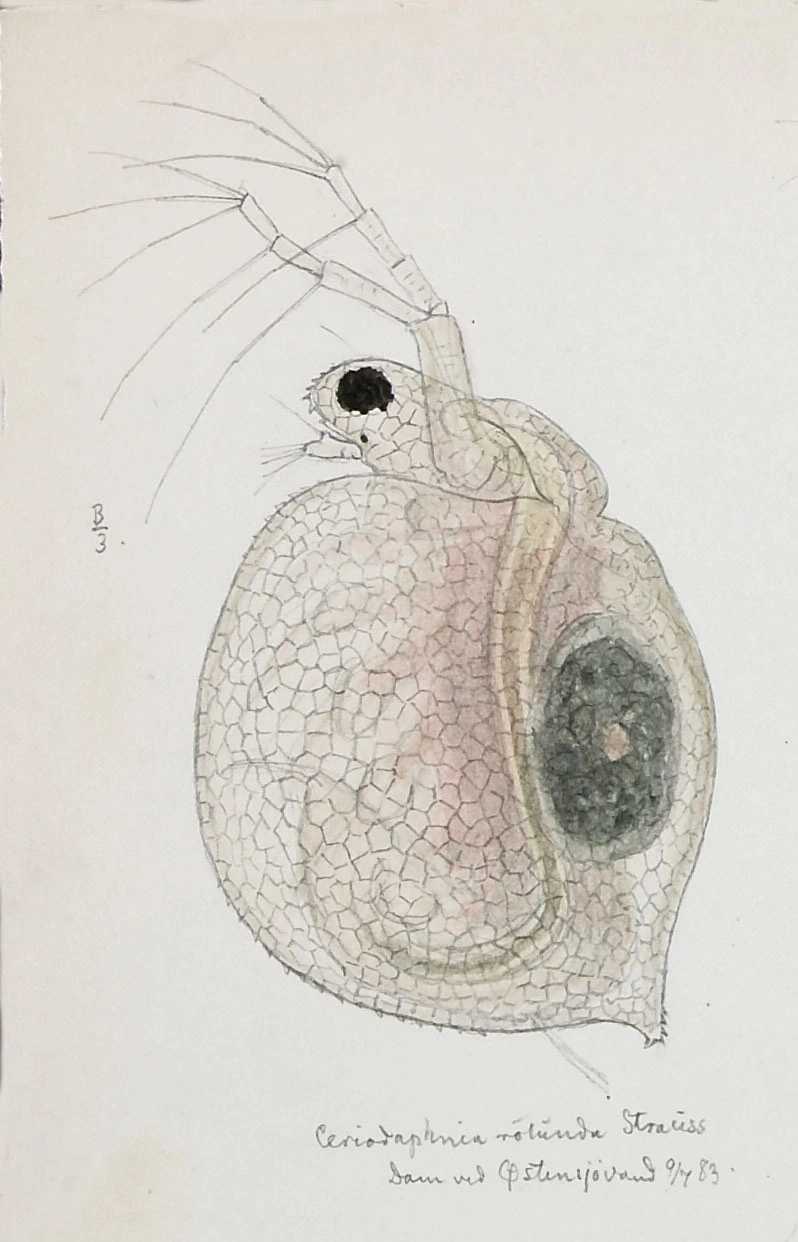Ceriodaphnia laticaudata
The species can be identified by the characteristic look of the abdomen. It is found in a limited number of ponds in the vicinity of Oslo and Bergen.
Key characteristics
Ceriodaphnia laticaudata (female)
Ceriodaphnia laticaudata (male)
Seen from the side Ceriodaphnia laticaudata has an oval look. Its head is relatively small and the first pair of antennae is relatively short and broad. Dorsally there is a marked incurvature between the head and thorax. Its postabdomen is wide in the middle forming an angel towards the posterior end which has about seven small denticles. Except for the first and the last, the remaining are relatively small and widely separated. It has a reddish-brown, reddish-yellow or yellowish-brown colour.
Female: Length 0.6–0.9 mm
Male: Length 0.7 mm
Ecology and distribution
C. laticaudata is a littoral species which was recorded by Sars (1890), however he never mentioned where it was found. Since Sars the species has only been found in a limited number of ponds. The majority of these are from the vicinity of Oslo. These localities are characterized by electrolyte rich water (13–56 mS/m) while pH varies between 6.0 and 8.0.
| Vitenskapelig navn | < 4,5 | 4,5 - 4,9 | 5,0 - 5,4 | 5,5 - 5,9 | 6,0 - 6,4 | 6,5 - 7,0 | 7,0 - 7,4 | > 7,5 |
|---|---|---|---|---|---|---|---|---|
| 0 | 0 | 0 | 0 | 0,3 | 0,2 | 0,4 | 4 |
| Vitenskapelig navn | < 1,0 | 1,0 - 1,4 | 1,5 - 1,9 | 2,0 - 2,9 | 3,0 - 3,9 | 4,0 - 4,9 | 5,0 - 6,9 | 7,0 - 9,9 | > 10,0 |
|---|---|---|---|---|---|---|---|---|---|
| 0 | 0 | 0 | 0 | 0 | 0 | 0 | 0 | 3,1 |
| Vitenskapelig navn | < 0,01 | 0,01 - 0,09 | 0,1 - 0,9 | 1,0 - 9,9 | 10,0 - 99 | 100 - 999 | > 1000 |
|---|---|---|---|---|---|---|---|
| 0 | 2,5 | 0,3 | 0,3 | 0 | 0 | 0 |
| Vitenskapelig navn | < 100 | 100-299 | 300-499 | 500-699 | 700-999 | >1000 |
|---|---|---|---|---|---|---|
| 0,7 | 0,5 | 0 | 0 | 0 | 0 |
Look-alikes
Ceriodaphnia rotunda


